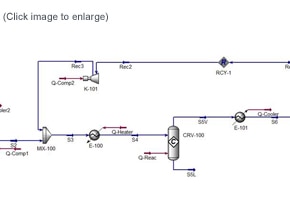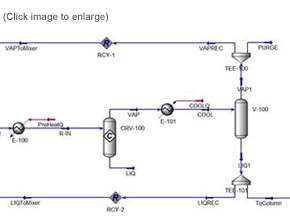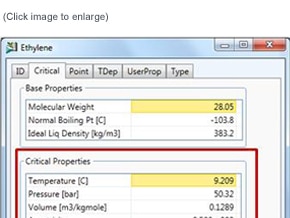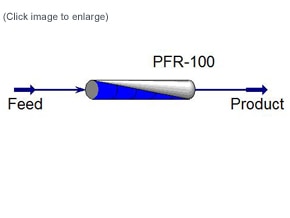
Design – Demo the essentials of process design.
Process design simulation allows the engineer to explore and evaluate alternatives to select the optimal process design to meet requirements. Included in this module are a set of step-wise iterations to produce a basic process design.

Distillation – Teach how to model distillation columns.
Process simulation allows users to test the feasibility of different separations, and compare and optimize designs. Included in this module are instructions on how to simulate distillation columns using Aspen HYSYS with various real-world applications.

Dynamics – Show how to convert a steady state simulation to a dynamic simulation.
Dynamic simulation allows users to investigate how fluctuations influence the performance of the overall process—crucial to process control. Included in this module are steps to convert a steady state simulation to a dynamic simulation, and how to create parameter fluctuations and observe the dynamic effects.

Material and heat balance – Solve stream compositions and state variables.
Heat and material balances can help solve stream compositions and state variables (T, P, etc.). Process simulation can be used to solve complex problems, such as a process flowsheet. This module includes instructions on how to use Aspen HYSYS to simulate simplified chemical processes.

Petroleum – Tackle the issues that arise in the energy industry.
These teaching modules will take a closer look at issues that commonly arise in the petroleum industry, such as the design of a Gas Oil Separation Plant and the formation of hydrates in gas pipelines.

Physical properties – Show how to use physical properties for process simulation.
The accuracy of physical property data is a pre-requisite for process design, simulation, troubleshooting, and optimization. Included in this module are step-by-step examples on how to access the vast amount of physical data in Aspen HYSYS, how to create hypothetical components, and how to use physical properties for process design.

Reactors – Teach how to model reactors.
Modeling reactors provides the basis for how chemical reactions and kinetics affect a process. Included in this module are step-by-step examples on how to use simulation for plug flow reactors (PFR) and continuous stirred tank reactors (CSTR).

Thermodynamics – Simulate real-world applications.
Thermodynamics are essential to chemical engineering simulation. Included in this module are step-by-step instructions on how to use various thermodynamic properties to simulate real-world applications.
